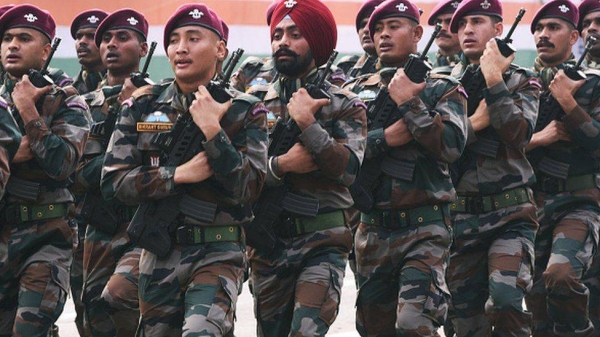
The Indian Army has long prided itself on its professional standards, meritocratic promotions, and commitment to national defense. However, in recent years, these core values have been overshadowed by an unhealthy trend of favoritism, particularly the monopoly held by graduates from India’s elite military training institutions, especially Sainik Schools. While these institutions have produced some of the finest officers in India’s military history, their graduates have come to dominate top-tier leadership positions, often at the expense of other qualified officers. This practice has led to widespread discontent within the armed forces and has raised serious concerns about the erosion of meritocracy within the Indian military.
The Rise of the Sainik School Elite
Sainik Schools were originally established to prepare young students for entry into the National Defence Academy (NDA) and to create a pool of disciplined, military-ready officers. Over the years, graduates of these schools have risen through the ranks to hold key leadership positions in the Indian Army, Navy, and Air Force. While this might seem like a testament to the success of these institutions, the reality is more complex. The dominance of Sainik School graduates in the military hierarchy has created an environment where personal connections and institutional loyalties often take precedence over professional competence. Today, many of India’s top military leaders, including Gen Anil Chauhan (CDS), Gen Upendra Dwivedi (COAS), and several others, are products of Sainik Schools. While these officers have undoubtedly earned their positions through years of service, the overwhelming presence of Sainik School alumni in senior leadership positions has raised concerns about favoritism and the exclusion of equally capable officers from other backgrounds.
Favoritism in Appointments and Promotions
The monopoly of Sainik School graduates within the Indian military has led to a culture of favoritism, where officers from these institutions are often given preferential treatment in appointments and promotions. This has created a system where officers who did not attend these elite institutions are frequently overlooked, regardless of their qualifications or performance. The result is a growing sense of disillusionment among competent officers who feel that their careers are being stymied by an entrenched system of favoritism. This favoritism extends beyond promotions to include high-level appointments, influential postings, and other perks. Officers from Sainik Schools are often placed in key positions where they have the opportunity to further their careers and influence the military’s decision-making processes. This practice has not only alienated other officers but has also undermined the overall professionalism of the Indian Army.
Consequences for Military Professionalism
The dominance of Sainik School graduates and the culture of favoritism that accompanies it have serious consequences for the Indian Army’s professionalism. Meritocracy, which should be the cornerstone of any military institution, has been replaced by a system where personal connections and institutional affiliations determine an officer’s career trajectory. This has led to a decline in morale among officers who feel that their hard work and dedication are not being recognized.
Moreover, the focus on promoting officers from specific institutions has created a lack of diversity in leadership. The Indian military is a large and complex organization that requires leaders with a wide range of experiences and perspectives. By favoring officers from a narrow pool of candidates, the army is limiting its ability to adapt to new challenges and think creatively about modern military strategy.
A Path Forward: Restoring Meritocracy
To restore professionalism and meritocracy within the Indian Army, the military leadership must take steps to address the issue of favoritism and the monopoly of Sainik School graduates. Promotions and appointments should be based on objective criteria, such as an officer’s performance, leadership skills, and ability to contribute to the army’s overall mission. The military must also promote a culture of inclusivity, where officers from all backgrounds have an equal opportunity to advance in their careers. Additionally, the Indian Army should consider reforms to its military education and training systems. While Sainik Schools have produced many capable officers, the military must ensure that it is drawing talent from a broad range of institutions. By doing so, the army can create a more diverse and dynamic leadership that is better equipped to tackle the complex security challenges of the 21st century.
Conclusion
The dominance of Sainik School graduates within the Indian military is a symptom of a larger problem – the erosion of meritocracy and the rise of favoritism. While these institutions have played an important role in shaping India’s military leadership, their monopoly on top-tier positions has led to widespread discontent and a decline in professionalism. To ensure that the Indian Army remains a capable and professional force, military leadership must take steps to promote meritocracy, eliminate favoritism, and create a more inclusive and diverse leadership structure.
